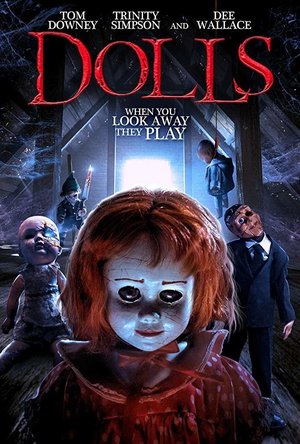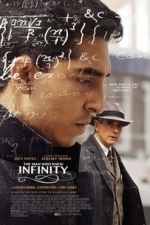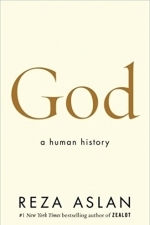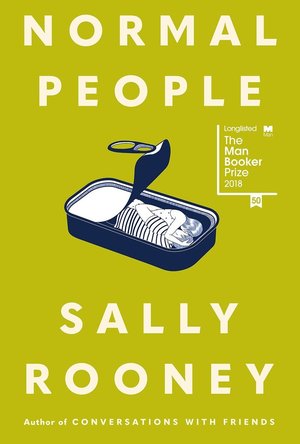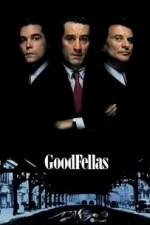Search
Merissa (13619 KP) rated Hope's Deceit (The Fated #2) in Books
Apr 25, 2023
The dude is back! Morpheus reigns supreme with his sarcasm and cocky attitude, although you do also see a softer side to him occasionally. As for the rest of the characters, they continue to change and grow with each situation, divulging their secrets and showing strength where none was expected.
Trinity still has her hands full as she tries to learn about her powers and prepares for her eighteenth birthday which is rapidly approaching. Things are not all sunshine and roses with her and Blain - some of which is caused by miscommunication, some by age (she is only 17 after all) and some by circumstances. Every time they were together, my heart was in my mouth! I really want them to be together, but can also understand how the others say that Blain makes her weak. I really hope that she will start to show her true strength now, she has reason enough - and that is all I will say so that I don't give out any spoilers.
The one character I didn't get on with as much in this book is Trinity's dad. He seemed to have whiplash with his emotions and I just couldn't keep up. Still, this is a small thing and also understandable as a father realises he has to let his daughter grow up, even if these circumstances are slightly unusual! 😉
Well-written, fast-paced and chock full of emotion, you will be held prisoner by this book, turning the pages as you immerse yourself within the storyline. With no spelling or grammatical errors that I found, this was an amazing second book and I am now on tenterhooks whilst I wait for the third. If you like Urban Fantasy with a bit of Greek Mythology thrown in, then I can highly recommend this book and the first one in the series. Absolutely fantastic.
* A copy of this book was provided to me with no requirements for a review. I voluntarily read this book, and my comments here are my honest opinion. *
Merissa
Archaeolibrarian - I Dig Good Books!
Nov 13, 2015
Trinity still has her hands full as she tries to learn about her powers and prepares for her eighteenth birthday which is rapidly approaching. Things are not all sunshine and roses with her and Blain - some of which is caused by miscommunication, some by age (she is only 17 after all) and some by circumstances. Every time they were together, my heart was in my mouth! I really want them to be together, but can also understand how the others say that Blain makes her weak. I really hope that she will start to show her true strength now, she has reason enough - and that is all I will say so that I don't give out any spoilers.
The one character I didn't get on with as much in this book is Trinity's dad. He seemed to have whiplash with his emotions and I just couldn't keep up. Still, this is a small thing and also understandable as a father realises he has to let his daughter grow up, even if these circumstances are slightly unusual! 😉
Well-written, fast-paced and chock full of emotion, you will be held prisoner by this book, turning the pages as you immerse yourself within the storyline. With no spelling or grammatical errors that I found, this was an amazing second book and I am now on tenterhooks whilst I wait for the third. If you like Urban Fantasy with a bit of Greek Mythology thrown in, then I can highly recommend this book and the first one in the series. Absolutely fantastic.
* A copy of this book was provided to me with no requirements for a review. I voluntarily read this book, and my comments here are my honest opinion. *
Merissa
Archaeolibrarian - I Dig Good Books!
Nov 13, 2015

Truckloads - Truck Load Boards
Business and Navigation
App
America’s Most Popular Load Board App. Get loaded faster with Trucker Path Truckloads! Truckloads...
Darren (1599 KP) rated Dolls (2019) in Movies
Jul 2, 2019
Story: Dolls starts when alcoholic children’s book author Robert Holbrook (Downey) moves into his recently deceased mother’s home to start work on his latest work, when he is joined by his teenage daughter Sammey (Simpson) who wants to get away from her mother.
When Robert and Sammey discover three creepy dolls in the attic, Robert decides that he wants to use these characters to create his latest story, known as the Attic Dolls. When a sister of a former patient Margaret (Wallace) appears, she warns Sammey about the evil inside the dolls that come out to play when you look away.
Thoughts on Dolls
Characters – Robert is an alcoholic children’s author, he has made mistakes in his life which has left his family facing financial ruin, his daughter struggle to be able to face a college future, he has moved out to focus on his new book, which will see him being joined by his daughter. The latest book idea uses the creepy dolls found in the attic of his mother’s home, which will see him suffer nightmares as he looks to withdraw from his drinking problems. Sammey is his 17-year-old daughter who wants to live with him over her mother, she has been on certain medications, though it is unclear what is wrong with her to need them. She first gets scared by the dolls believing the story she hears about them, while trying to remain rebellious about her future. Margaret was the sister of one of the patient’s of Robert’s mother, she warns the family about the evil from the dolls which might be connected to the deaths.
Performances – Thomas Downey is strong through the film, we believe that he is going through troubles. Trinity Simpson is entertaining in her role, she brings the fear of what is going on to make us believe everything happening. Dee Wallace is the biggest name in the film, she is in a supporting role, which lets her bring the experience to the film.
Story – The story here follows a family that move into a house of a deceased relative only to discover three creepy dolls in the attic, soon strange things start happening around the house as it appears the dolls come to life when people aren’t looking. This story does play into the creepy dolls genre of horror which does to use mental health and addiction to try and reflect the situation going on through the events of the film. It does start by going in one direction, but it does feel like it is going to target on a rampage, then throws another twist to them in and it does seem to rush a lot of the story going on through the film. it does end in a very confusing manor which could make most of the film feel almost redundant.
Horror – The horror in this comes from the dolls which do feel creepy and make us feel uneasy wondering what they will be doing next.
Settings – The film is set in the one location which is the house, it is filled with locations where the dolls could sneak around without being seen, only heard, which does play into the rules created.
Special Effects – The effects in the film are only used when they are needed, they are simply with certain small movements which does help the film unfold.
Scene of the Movie – The dolls appearance.
That Moment That Annoyed Me – The ending.
Final Thoughts – This is a new creepy doll movie, which has been the it feature at the moment, with Child’s Play and Annabelle in the cinema, this one does have a creepy feel to it even if the story does seem to be rushed.
Overall: Creepy Fun horror.
When Robert and Sammey discover three creepy dolls in the attic, Robert decides that he wants to use these characters to create his latest story, known as the Attic Dolls. When a sister of a former patient Margaret (Wallace) appears, she warns Sammey about the evil inside the dolls that come out to play when you look away.
Thoughts on Dolls
Characters – Robert is an alcoholic children’s author, he has made mistakes in his life which has left his family facing financial ruin, his daughter struggle to be able to face a college future, he has moved out to focus on his new book, which will see him being joined by his daughter. The latest book idea uses the creepy dolls found in the attic of his mother’s home, which will see him suffer nightmares as he looks to withdraw from his drinking problems. Sammey is his 17-year-old daughter who wants to live with him over her mother, she has been on certain medications, though it is unclear what is wrong with her to need them. She first gets scared by the dolls believing the story she hears about them, while trying to remain rebellious about her future. Margaret was the sister of one of the patient’s of Robert’s mother, she warns the family about the evil from the dolls which might be connected to the deaths.
Performances – Thomas Downey is strong through the film, we believe that he is going through troubles. Trinity Simpson is entertaining in her role, she brings the fear of what is going on to make us believe everything happening. Dee Wallace is the biggest name in the film, she is in a supporting role, which lets her bring the experience to the film.
Story – The story here follows a family that move into a house of a deceased relative only to discover three creepy dolls in the attic, soon strange things start happening around the house as it appears the dolls come to life when people aren’t looking. This story does play into the creepy dolls genre of horror which does to use mental health and addiction to try and reflect the situation going on through the events of the film. It does start by going in one direction, but it does feel like it is going to target on a rampage, then throws another twist to them in and it does seem to rush a lot of the story going on through the film. it does end in a very confusing manor which could make most of the film feel almost redundant.
Horror – The horror in this comes from the dolls which do feel creepy and make us feel uneasy wondering what they will be doing next.
Settings – The film is set in the one location which is the house, it is filled with locations where the dolls could sneak around without being seen, only heard, which does play into the rules created.
Special Effects – The effects in the film are only used when they are needed, they are simply with certain small movements which does help the film unfold.
Scene of the Movie – The dolls appearance.
That Moment That Annoyed Me – The ending.
Final Thoughts – This is a new creepy doll movie, which has been the it feature at the moment, with Child’s Play and Annabelle in the cinema, this one does have a creepy feel to it even if the story does seem to be rushed.
Overall: Creepy Fun horror.
Gareth von Kallenbach (980 KP) rated The Man Who Knew Infinity (2016) in Movies
Aug 6, 2019
In 1914, Srinivasa Ramanujan (Dev Patel) traveled from his poverty-stricken existence in Madras, India to Trinity College, Cambridge in the hope that he would have his theories published and be recognized for the mathematical genius he was. While there, despite facing racism, hostility and severe illness, he formed an important relationship with G.H. Hardy (Jeremy Irons) that would lead to breakthroughs in mathematics that are still relevant today.
It would be easy to prattle on about the tremendous talent onscreen in The Man Who Knew Infinity and with a supporting cast that features some of Britain’s best; we get exactly what we’d expect from the likes of Jeremy Irons, Toby Jones and Kevin McNally. All at the top of their game, they serve the story well with nuanced and well-rounded performances, and I’m certainly not going to take anything away from the exceptional jobs they’ve all done here. All the praise this film deserves however, needs to be directed at Dev Patel. In his role as Ramanujan, he’s completely stepped out of the shadow of his big-screen debut in Slumdog Millionaire and has proved his worth as a leading man capable of carrying the weight of an entire feature. Distancing himself also from the lovable, bumbling hotel owner in The Best Exotic Marigold movies, with Ramanujan he is allowed the room to display an incredible range, from quiet intensity to outspoken, unbridled passion and determination. Kudos also to the writers for not going The Big Short route (e.g. talking down to the uninitiated with ridiculous cutaways), but by using simple logic and examples to help convey complex information relevant to the plot.
For the performances alone, this is a solid entry in the biopic genre, but structurally speaking, it’s the editing that lets the film down. This very easily could have emerged as the next A Beautiful Mind, but between a bloated first act, a middling and wandering second act and a truncated final third, The Man Who Knew Infinity falls just short of greatness. Not only is no attention paid to Ramanujan’s achievements as a child, but too much time is given to details and subplots that are arguably inconsequential to the main narrative. This is especially evident in the inclusion of Bertrand Russell (who lived such a rich and fascinating life himself, it would take several films to do that story justice) and his being here feels like just a hollow excuse to include a cameo from another figure of historical importance. The biggest disservice though comes with the ending where we are denied a much needed catharsis and are left to suffer through a slap-dash, halfhearted montage. A restructuring from a more seasoned hand would have undoubtedly led to stronger word-of-mouth and perhaps a wider release. I also wouldn’t be surprised to learn that this is a case of “too many cooks” as the film has a staggering 43 credited producers. I get that independent features can be forced to source their funding from many places, but you can’t tell me that with all those opinions flying about that some of the original intent didn’t get lost in the noise.
As an aside, what Stephen Fry is doing here is beyond me. He’s given two scenes with perhaps a half a dozen lines, leaving his incomparable persona entirely wasted on a completely throwaway character. It’s a pity he wasn’t given a meatier role as one of Ramanujan’s antagonists.
It would be easy to prattle on about the tremendous talent onscreen in The Man Who Knew Infinity and with a supporting cast that features some of Britain’s best; we get exactly what we’d expect from the likes of Jeremy Irons, Toby Jones and Kevin McNally. All at the top of their game, they serve the story well with nuanced and well-rounded performances, and I’m certainly not going to take anything away from the exceptional jobs they’ve all done here. All the praise this film deserves however, needs to be directed at Dev Patel. In his role as Ramanujan, he’s completely stepped out of the shadow of his big-screen debut in Slumdog Millionaire and has proved his worth as a leading man capable of carrying the weight of an entire feature. Distancing himself also from the lovable, bumbling hotel owner in The Best Exotic Marigold movies, with Ramanujan he is allowed the room to display an incredible range, from quiet intensity to outspoken, unbridled passion and determination. Kudos also to the writers for not going The Big Short route (e.g. talking down to the uninitiated with ridiculous cutaways), but by using simple logic and examples to help convey complex information relevant to the plot.
For the performances alone, this is a solid entry in the biopic genre, but structurally speaking, it’s the editing that lets the film down. This very easily could have emerged as the next A Beautiful Mind, but between a bloated first act, a middling and wandering second act and a truncated final third, The Man Who Knew Infinity falls just short of greatness. Not only is no attention paid to Ramanujan’s achievements as a child, but too much time is given to details and subplots that are arguably inconsequential to the main narrative. This is especially evident in the inclusion of Bertrand Russell (who lived such a rich and fascinating life himself, it would take several films to do that story justice) and his being here feels like just a hollow excuse to include a cameo from another figure of historical importance. The biggest disservice though comes with the ending where we are denied a much needed catharsis and are left to suffer through a slap-dash, halfhearted montage. A restructuring from a more seasoned hand would have undoubtedly led to stronger word-of-mouth and perhaps a wider release. I also wouldn’t be surprised to learn that this is a case of “too many cooks” as the film has a staggering 43 credited producers. I get that independent features can be forced to source their funding from many places, but you can’t tell me that with all those opinions flying about that some of the original intent didn’t get lost in the noise.
As an aside, what Stephen Fry is doing here is beyond me. He’s given two scenes with perhaps a half a dozen lines, leaving his incomparable persona entirely wasted on a completely throwaway character. It’s a pity he wasn’t given a meatier role as one of Ramanujan’s antagonists.
Hazel (1853 KP) rated God: A Human History in Books
Nov 5, 2017
An Ambiguous History
I received this book for free through Goodreads First Reads.
Where did religion come from? This is the question Reza Aslan, a scholar of religions, attempts to answer in his latest publication, God: A Human History. To date, Aslan has tackled subjects such as the life of Jesus of Nazareth, and the origins, evolution and future of Islam. In this book, the author journeys back to the earliest evidence of human existence and, using a mix of resources, theories and investigations, tries to determine how our ancestors conceived the idea of gods and souls. Maintaining the idea that the majority of humans think of God as a divine version of ourselves, Aslan also looks at the way our perception of life after death has altered due to the changes in our governments and cultures.
Reza Aslan claims that he, a Muslim-devout-Christian-convert-turned-Sufi, is neither trying to prove or disprove the existence of God or gods. Instead, he is providing readers with a thorough history of religion with a strong suggestion that we, as believers, have fashioned God in our image, and not the other way around.
Insisting that belief systems are inherited from each previous generation, Aslan takes a look at ancient cave drawings where he, and many other theorists, surmise that a form of religion was already well underway. Lack of written word results in a lot of speculation and hypothesis as to what these, usually animal-like, drawings represent, however, many have come to the conclusion that early humans had some form of animistic belief system.
Although not a dig at religion, after all, the author is religious himself, the following chapters bring in to question the authenticity of past and present beliefs. With reference to various psychologists, Aslan poses the theory that ancient humans may have misinterpreted dreams as evidence of a spirit realm. With no one qualified to clarify the things they did not understand, anything without a clear explanation may have been attributed to a god or gods.
As the author describes how religious ideas may have developed from these primitive beliefs to the fully detailed faiths of today, he labels the human race as anthropocentric creatures that have based their religions on human traits and emotions. By reporting in this way, it comes across that the past ideas of the soul, spiritual realms, gods and so forth could not possibly be true, yet, as the final chapters suggest, Aslan is still adamant about the existence of God.
Aslan’s narrative speeds up, finally reaching the recognizable religions of today. Beginning with the Israelites, enslaved by the Egyptians, the author explains, using biblical references, how the first successful monotheistic religion came about. However, researchers have studied the early Bible texts and are inconclusive as to whether the God worshipped by the Jews was the only divine being or whether there were others of a similar standing.
Next, Aslan explores Christianity, posing more questions than he solves, for example, is God one or is God three (i.e. the Holy Trinity)? He defines and compares the definitions of monotheism and pantheism, eventually bringing in Islam and the development of Sufism, which he is not afraid of admitting he agrees with.
God: A Human History is disappointingly short, ending with the feeble conclusion that humans are born with the ability to be convinced of the existence of a divine being and the soul, but it is our own choice to decide whether or not to believe in them. The remaining third of the book is an abundance of notes on the texts, bibliographical references, and Reza Aslan’s personal opinions about the ideas and theories mentioned in his history of religion.
Although an extensive history on the origins of religion, God: A Human History leaves readers none the wiser as to whether their belief is founded in truth or whether it is something that has evolved over time due to lack of understanding about the world. Granted, it was not the aim of the book to prove or disprove the existence of God, however, it may unintentionally sow seeds of doubt or, potentially, anger devout believers. However, there is no attempt at persuading readers to believe one thing or another, thus making it suitable for people of all religion and none.
Where did religion come from? This is the question Reza Aslan, a scholar of religions, attempts to answer in his latest publication, God: A Human History. To date, Aslan has tackled subjects such as the life of Jesus of Nazareth, and the origins, evolution and future of Islam. In this book, the author journeys back to the earliest evidence of human existence and, using a mix of resources, theories and investigations, tries to determine how our ancestors conceived the idea of gods and souls. Maintaining the idea that the majority of humans think of God as a divine version of ourselves, Aslan also looks at the way our perception of life after death has altered due to the changes in our governments and cultures.
Reza Aslan claims that he, a Muslim-devout-Christian-convert-turned-Sufi, is neither trying to prove or disprove the existence of God or gods. Instead, he is providing readers with a thorough history of religion with a strong suggestion that we, as believers, have fashioned God in our image, and not the other way around.
Insisting that belief systems are inherited from each previous generation, Aslan takes a look at ancient cave drawings where he, and many other theorists, surmise that a form of religion was already well underway. Lack of written word results in a lot of speculation and hypothesis as to what these, usually animal-like, drawings represent, however, many have come to the conclusion that early humans had some form of animistic belief system.
Although not a dig at religion, after all, the author is religious himself, the following chapters bring in to question the authenticity of past and present beliefs. With reference to various psychologists, Aslan poses the theory that ancient humans may have misinterpreted dreams as evidence of a spirit realm. With no one qualified to clarify the things they did not understand, anything without a clear explanation may have been attributed to a god or gods.
As the author describes how religious ideas may have developed from these primitive beliefs to the fully detailed faiths of today, he labels the human race as anthropocentric creatures that have based their religions on human traits and emotions. By reporting in this way, it comes across that the past ideas of the soul, spiritual realms, gods and so forth could not possibly be true, yet, as the final chapters suggest, Aslan is still adamant about the existence of God.
Aslan’s narrative speeds up, finally reaching the recognizable religions of today. Beginning with the Israelites, enslaved by the Egyptians, the author explains, using biblical references, how the first successful monotheistic religion came about. However, researchers have studied the early Bible texts and are inconclusive as to whether the God worshipped by the Jews was the only divine being or whether there were others of a similar standing.
Next, Aslan explores Christianity, posing more questions than he solves, for example, is God one or is God three (i.e. the Holy Trinity)? He defines and compares the definitions of monotheism and pantheism, eventually bringing in Islam and the development of Sufism, which he is not afraid of admitting he agrees with.
God: A Human History is disappointingly short, ending with the feeble conclusion that humans are born with the ability to be convinced of the existence of a divine being and the soul, but it is our own choice to decide whether or not to believe in them. The remaining third of the book is an abundance of notes on the texts, bibliographical references, and Reza Aslan’s personal opinions about the ideas and theories mentioned in his history of religion.
Although an extensive history on the origins of religion, God: A Human History leaves readers none the wiser as to whether their belief is founded in truth or whether it is something that has evolved over time due to lack of understanding about the world. Granted, it was not the aim of the book to prove or disprove the existence of God, however, it may unintentionally sow seeds of doubt or, potentially, anger devout believers. However, there is no attempt at persuading readers to believe one thing or another, thus making it suitable for people of all religion and none.
Hazel (1853 KP) rated God: A Human History in Books
Dec 7, 2018
<i>I received this book for free through Goodreads First Reads.
</i>
Where did religion come from? This is the question Reza Aslan, a scholar of religions, attempts to answer in his latest publication, <i>God: A Human History.</i> To date, Aslan has tackled subjects such as the life of Jesus of Nazareth, and the origins, evolution and future of Islam. In this book, the author journeys back to the earliest evidence of human existence and, using a mix of resources, theories and investigations, tries to determine how our ancestors conceived the idea of gods and souls. Maintaining the idea that the majority of humans think of God as a divine version of ourselves, Aslan also looks at the way our perception of life after death has altered due to the changes in our governments and cultures.
Reza Aslan claims that he, a Muslim-devout-Christian-convert-turned-Sufi, is neither trying to prove or disprove the existence of God or gods. Instead, he is providing readers with a thorough history of religion with a strong suggestion that we, as believers, have fashioned God in our image, and not the other way around.
Insisting that belief systems are inherited from each previous generation, Aslan takes a look at ancient cave drawings where he, and many other theorists, surmise that a form of religion was already well underway. Lack of written word results in a lot of speculation and hypothesis as to what these, usually animal-like, drawings represent, however, many have come to the conclusion that early humans had some form of animistic belief system.
Although not a dig at religion, after all, the author is religious himself, the following chapters bring in to question the authenticity of past and present beliefs. With reference to various psychologists, Aslan poses the theory that ancient humans may have misinterpreted dreams as evidence of a spirit realm. With no one qualified to clarify the things they did not understand, anything without a clear explanation may have been attributed to a god or gods.
As the author describes how religious ideas may have developed from these primitive beliefs to the fully detailed faiths of today, he labels the human race as anthropocentric creatures that have based their religions on human traits and emotions. By reporting in this way, it comes across that the past ideas of the soul, spiritual realms, gods and so forth could not possibly be true, yet, as the final chapters suggest, Aslan is still adamant about the existence of God.
Aslan’s narrative speeds up, finally reaching the recognizable religions of today. Beginning with the Israelites, enslaved by the Egyptians, the author explains, using biblical references, how the first successful monotheistic religion came about. However, researchers have studied the early Bible texts and are inconclusive as to whether the God worshipped by the Jews was the only divine being or whether there were others of a similar standing.
Next, Aslan explores Christianity, posing more questions than he solves, for example, is God one or is God three (i.e. the Holy Trinity)? He defines and compares the definitions of monotheism and pantheism, eventually bringing in Islam and the development of Sufism, which he is not afraid of admitting he agrees with.
<i>God: A Human History </i>is disappointingly short, ending with the feeble conclusion that humans are born with the ability to be convinced of the existence of a divine being and the soul, but it is our own choice to decide whether or not to believe in them. The remaining third of the book is an abundance of notes on the texts, bibliographical references, and Reza Aslan’s personal opinions about the ideas and theories mentioned in his history of religion.
Although an extensive history on the origins of religion, <i>God: A Human History </i>leaves readers none the wiser as to whether their belief is founded in truth or whether it is something that has evolved over time due to lack of understanding about the world. Granted, it was not the aim of the book to prove or disprove the existence of God, however, it may unintentionally sow seeds of doubt or, potentially, anger devout believers. However, there is no attempt at persuading readers to believe one thing or another, thus making it suitable for people of all religion and none.
</i>
Where did religion come from? This is the question Reza Aslan, a scholar of religions, attempts to answer in his latest publication, <i>God: A Human History.</i> To date, Aslan has tackled subjects such as the life of Jesus of Nazareth, and the origins, evolution and future of Islam. In this book, the author journeys back to the earliest evidence of human existence and, using a mix of resources, theories and investigations, tries to determine how our ancestors conceived the idea of gods and souls. Maintaining the idea that the majority of humans think of God as a divine version of ourselves, Aslan also looks at the way our perception of life after death has altered due to the changes in our governments and cultures.
Reza Aslan claims that he, a Muslim-devout-Christian-convert-turned-Sufi, is neither trying to prove or disprove the existence of God or gods. Instead, he is providing readers with a thorough history of religion with a strong suggestion that we, as believers, have fashioned God in our image, and not the other way around.
Insisting that belief systems are inherited from each previous generation, Aslan takes a look at ancient cave drawings where he, and many other theorists, surmise that a form of religion was already well underway. Lack of written word results in a lot of speculation and hypothesis as to what these, usually animal-like, drawings represent, however, many have come to the conclusion that early humans had some form of animistic belief system.
Although not a dig at religion, after all, the author is religious himself, the following chapters bring in to question the authenticity of past and present beliefs. With reference to various psychologists, Aslan poses the theory that ancient humans may have misinterpreted dreams as evidence of a spirit realm. With no one qualified to clarify the things they did not understand, anything without a clear explanation may have been attributed to a god or gods.
As the author describes how religious ideas may have developed from these primitive beliefs to the fully detailed faiths of today, he labels the human race as anthropocentric creatures that have based their religions on human traits and emotions. By reporting in this way, it comes across that the past ideas of the soul, spiritual realms, gods and so forth could not possibly be true, yet, as the final chapters suggest, Aslan is still adamant about the existence of God.
Aslan’s narrative speeds up, finally reaching the recognizable religions of today. Beginning with the Israelites, enslaved by the Egyptians, the author explains, using biblical references, how the first successful monotheistic religion came about. However, researchers have studied the early Bible texts and are inconclusive as to whether the God worshipped by the Jews was the only divine being or whether there were others of a similar standing.
Next, Aslan explores Christianity, posing more questions than he solves, for example, is God one or is God three (i.e. the Holy Trinity)? He defines and compares the definitions of monotheism and pantheism, eventually bringing in Islam and the development of Sufism, which he is not afraid of admitting he agrees with.
<i>God: A Human History </i>is disappointingly short, ending with the feeble conclusion that humans are born with the ability to be convinced of the existence of a divine being and the soul, but it is our own choice to decide whether or not to believe in them. The remaining third of the book is an abundance of notes on the texts, bibliographical references, and Reza Aslan’s personal opinions about the ideas and theories mentioned in his history of religion.
Although an extensive history on the origins of religion, <i>God: A Human History </i>leaves readers none the wiser as to whether their belief is founded in truth or whether it is something that has evolved over time due to lack of understanding about the world. Granted, it was not the aim of the book to prove or disprove the existence of God, however, it may unintentionally sow seeds of doubt or, potentially, anger devout believers. However, there is no attempt at persuading readers to believe one thing or another, thus making it suitable for people of all religion and none.
Kristy H (1252 KP) rated Normal People in Books
Mar 19, 2020
Marianne and Connell form a relationship in school, starting to talk to one another when Connell comes to pick up his mother at her job cleaning for Marianne's family. But at school itself, they pretend not to know each other, fiercely aware of where they stand in the social structure: Connell is a popular soccer star, while Marianne is smart but a social outcast. Things change a year later, when they are both studying at Trinity College. Marianne has found her social circle and is popular among her group of friends. Connell is known as smart, but feels awkward. The two's relationship ebbs and flows--at times, they are deeply in love; at other moments, they date other people and rarely speak.
I'm not exactly sure what to say about this one. I listened to this book over a couple of months as I traveled off and on for work. It felt very slow, and while I know part of it was the stops and starts when I was traveling, but some of it was the book itself. I can definitely recognize the brilliance others found in this novel. Rooney is a wonderful writer, and there were passages that I wish I could capture and save to savor later. At other moments, I wanted to hurry things along quite badly... she turned the water on in the shower, the water came out, the water fell to the floor, etc. Things are described in great detail, and often, I found myself frustrated at that.
This not a plot-driven novel, but a character-driven one. Told from the alternating perspectives of Marianne and Connell over time, it examines various points in their life. At times, they may even go back in time in their various point-of-view segment, forcing you to keep up with exactly what is happening and when. There is much explaining and much examining. A lot of talk of feelings and such. It's a very complex novel. I definitely did grow to be interested in Marianne and Connell, but it did take some time.
As I said, I can see why this book earned such rave reviews, but it wasn't entirely for me. I was frustrated that Marianne and Connell couldn't just talk to each other. The ending of the book left me annoyed--all this for that--and I often wanted things to happen more quickly than they did. Still, I appreciated Rooney's lovely writing. If you want a complicated look at how one relationship can affect two so-called normal people over time, this one is definitely for you. 3 stars.
I'm not exactly sure what to say about this one. I listened to this book over a couple of months as I traveled off and on for work. It felt very slow, and while I know part of it was the stops and starts when I was traveling, but some of it was the book itself. I can definitely recognize the brilliance others found in this novel. Rooney is a wonderful writer, and there were passages that I wish I could capture and save to savor later. At other moments, I wanted to hurry things along quite badly... she turned the water on in the shower, the water came out, the water fell to the floor, etc. Things are described in great detail, and often, I found myself frustrated at that.
This not a plot-driven novel, but a character-driven one. Told from the alternating perspectives of Marianne and Connell over time, it examines various points in their life. At times, they may even go back in time in their various point-of-view segment, forcing you to keep up with exactly what is happening and when. There is much explaining and much examining. A lot of talk of feelings and such. It's a very complex novel. I definitely did grow to be interested in Marianne and Connell, but it did take some time.
As I said, I can see why this book earned such rave reviews, but it wasn't entirely for me. I was frustrated that Marianne and Connell couldn't just talk to each other. The ending of the book left me annoyed--all this for that--and I often wanted things to happen more quickly than they did. Still, I appreciated Rooney's lovely writing. If you want a complicated look at how one relationship can affect two so-called normal people over time, this one is definitely for you. 3 stars.
Mel Rodriguez recommended GoodFellas (1990) in Movies (curated)

SkySafari 4 Plus: Map the Universe! Discover Sun, Moon, Mars, Stars, Planets, and Satellites with your telescope and NASA space missions!
Reference and Education
App
***SkySafari has been upgraded! For more information on the NEW SkySafari 5 Plus for iOS, visit...
Purple Phoenix Games (2266 KP) rated Bob Ross: Art of Chill Game in Tabletop Games
Jun 30, 2021
Bob Ross is a household name in the United States and has been for quite a while. The man is a legend and part of the Trinity of Mankind (which also includes Mister Rogers and Steve Irwin). Anyone who has watched this man paint instantly recognizes a beautiful human being with extreme talent and the ability to lull audiences into a state of euphoria as he paints mountains, creeks, cabins, and trees. And of course, every one should have a friend. His wholesomeness goes to 11! So what do I find one day whilst perusing the strange board game wares in my local Target one day three years ago but a Bob Ross game. I wasn’t expecting much, but had to have it for nostalgic reasons. Was my money wasted or is there something in this box worth actually playing?
Bob Ross: Art of Chill is a set collection, hand management, card drafting game that has its players attempting to complete masterful paintings before the master does in order to collect bonus “chill points” to win the game. Whomever manages to reach ultimate chill status will be victorious and can return to feeding Peapod, their rascally pocket squirrel.
To setup, place the easel and one of the shuffled painting panels upon it. Place the other panels (paintings) nearby. Place the main scoreboard nearby as well and place the shuffled Chill Cards on its space upon the board. The Technique Cards deck and the Art Supplies Card decks will be shuffled separately and placed below the board with four cards from each deck revealed as an offer. Place the Bob Mover (Bobeeple) on the easel in the first location printed on the panel. Each player will receive a palette, the scoring cube of their color to be placed on the scoreboard, the three Feature Markers, and three random Art Supplies Cards. The game may now begin!
On a turn players will be rolling the Bob die and carrying out its action. These actions are playing a paint card from hand onto their palette, drawing one Art Supplies Card from the deck to their hand, performing one free Action prior to the Action phase, or resolving the Bob die face. The Bob die face requires players to reveal a new Chill Card and resolve its immediate effects, or effects that will remain in play until a new Chill Card is revealed. Secondly, the Bobeeple will move to the next printed stopping point on the panel.
Once the die has been rolled and resolved, the active player will be able to take any three actions available in any order: Draw an Art Supplies Card (from the deck or from the offer), Sweep the Art Supplies Card (discard all face-up cards and reveal four new ones), Apply Paint to Your Palette (by placing it on your palette from your hand of cards), Wash Your Palette (by discarding cards from one of the palette areas to clear it), Earn a Technique Card (by discarding two like-cards from the hand of cards in order to score more VP for painting features in the future), or Paint a Feature (by discarding the required brush from the player’s hand of cards and the correct matching paints already applied to their palette).
Once complete, the next player will take their turn of rolling the die and completing three actions. Should players paint a feature on the panel before Bob moves to that spot on the panel the player(s) will gain extra bonus Chill points. Players may still paint features for points if Bob already has as well, they just will not receive the bonus Bob points. Turns will continue in this fashion until the moment one player has reached ultimate Chill and won the game.
Components. This game has a fair amount of components and I am happy to say they are all great! The cardboard components (palettes, score board) are good. The cards are all lovely linen-finished. The other player components are fine as well. The painting panels are excellent and feature actual Bob Ross masterpieces, and there are 15 double-sided panels in the box! The coolest component is certainly the easel though. It seems to be a somewhat real and functional easel (not that you would really want to paint on it) and it amps up the table appeal when setup and in play. I love the components and I am so glad that Big G Creative made a Bob Ross game with beautiful components. Anything less would be sacrilege.
It probably comes as no surprise that I love this game. I have always loved watching Bob Ross from when I was a child even up through my adulthood and I am relieved to be able to still watch him in action via Netflix. The game, though, is rather surprising. I certainly wasn’t expecting to like this as much as I do and was quite shocked to find out that there was actual substance in a Bob Ross game. Especially when it was stationed next to “games” like Who Wants to Be a Millionaire, Throw Throw Burrito, and the like. I enjoy the nostalgia in seeing my favorite colors in my hands like Phthalo Blue, Cadmium Orange, and Sap Green.
I don’t know if I would really consider this a gateway game, though I believe it really depends on the gamers with whom you are playing. There will be many times when you are concentrating on collecting the colors needed to finish a feature before Bob only to frustratingly never see that color on offer nor in the cards you draw and then the painting has to be refreshed because people can’t seem to stop rolling Bob on the die. However, if you play with people who can literally chill when things don’t go their way, this is a gem. Purple Phoenix Games gives Bob Ross: Art of Chill a 21 / 24. The only thing missing here is a way to, “beat the devil out of it,” and it would make my heart sing.
Bob Ross: Art of Chill is a set collection, hand management, card drafting game that has its players attempting to complete masterful paintings before the master does in order to collect bonus “chill points” to win the game. Whomever manages to reach ultimate chill status will be victorious and can return to feeding Peapod, their rascally pocket squirrel.
To setup, place the easel and one of the shuffled painting panels upon it. Place the other panels (paintings) nearby. Place the main scoreboard nearby as well and place the shuffled Chill Cards on its space upon the board. The Technique Cards deck and the Art Supplies Card decks will be shuffled separately and placed below the board with four cards from each deck revealed as an offer. Place the Bob Mover (Bobeeple) on the easel in the first location printed on the panel. Each player will receive a palette, the scoring cube of their color to be placed on the scoreboard, the three Feature Markers, and three random Art Supplies Cards. The game may now begin!
On a turn players will be rolling the Bob die and carrying out its action. These actions are playing a paint card from hand onto their palette, drawing one Art Supplies Card from the deck to their hand, performing one free Action prior to the Action phase, or resolving the Bob die face. The Bob die face requires players to reveal a new Chill Card and resolve its immediate effects, or effects that will remain in play until a new Chill Card is revealed. Secondly, the Bobeeple will move to the next printed stopping point on the panel.
Once the die has been rolled and resolved, the active player will be able to take any three actions available in any order: Draw an Art Supplies Card (from the deck or from the offer), Sweep the Art Supplies Card (discard all face-up cards and reveal four new ones), Apply Paint to Your Palette (by placing it on your palette from your hand of cards), Wash Your Palette (by discarding cards from one of the palette areas to clear it), Earn a Technique Card (by discarding two like-cards from the hand of cards in order to score more VP for painting features in the future), or Paint a Feature (by discarding the required brush from the player’s hand of cards and the correct matching paints already applied to their palette).
Once complete, the next player will take their turn of rolling the die and completing three actions. Should players paint a feature on the panel before Bob moves to that spot on the panel the player(s) will gain extra bonus Chill points. Players may still paint features for points if Bob already has as well, they just will not receive the bonus Bob points. Turns will continue in this fashion until the moment one player has reached ultimate Chill and won the game.
Components. This game has a fair amount of components and I am happy to say they are all great! The cardboard components (palettes, score board) are good. The cards are all lovely linen-finished. The other player components are fine as well. The painting panels are excellent and feature actual Bob Ross masterpieces, and there are 15 double-sided panels in the box! The coolest component is certainly the easel though. It seems to be a somewhat real and functional easel (not that you would really want to paint on it) and it amps up the table appeal when setup and in play. I love the components and I am so glad that Big G Creative made a Bob Ross game with beautiful components. Anything less would be sacrilege.
It probably comes as no surprise that I love this game. I have always loved watching Bob Ross from when I was a child even up through my adulthood and I am relieved to be able to still watch him in action via Netflix. The game, though, is rather surprising. I certainly wasn’t expecting to like this as much as I do and was quite shocked to find out that there was actual substance in a Bob Ross game. Especially when it was stationed next to “games” like Who Wants to Be a Millionaire, Throw Throw Burrito, and the like. I enjoy the nostalgia in seeing my favorite colors in my hands like Phthalo Blue, Cadmium Orange, and Sap Green.
I don’t know if I would really consider this a gateway game, though I believe it really depends on the gamers with whom you are playing. There will be many times when you are concentrating on collecting the colors needed to finish a feature before Bob only to frustratingly never see that color on offer nor in the cards you draw and then the painting has to be refreshed because people can’t seem to stop rolling Bob on the die. However, if you play with people who can literally chill when things don’t go their way, this is a gem. Purple Phoenix Games gives Bob Ross: Art of Chill a 21 / 24. The only thing missing here is a way to, “beat the devil out of it,” and it would make my heart sing.

